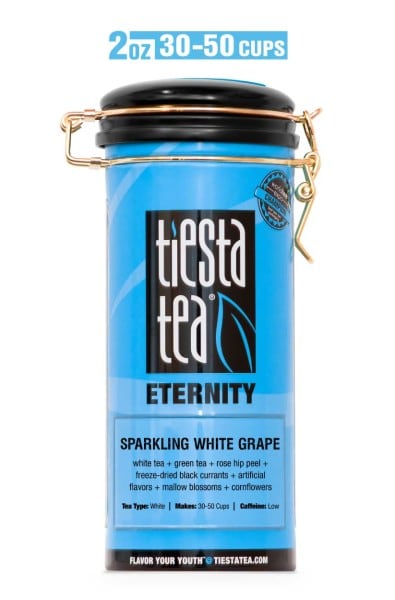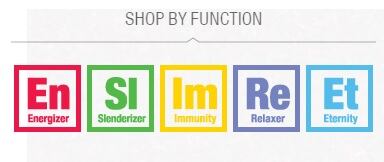“Most loose tea sellers don’t sell through the grocery store channel, they sell to premium tea boutiques or little retail stores, so their overhead is much higher than ours,” Patrick Tannous, president and co-founder of Chicagoland-based Tiesta Tea Company, told FoodNavigator-USA.
“We’re selling at grocery stores so the margin is much less,” he added. “We’re one of the first tea companies to launch a loose tea product for under $4.99 an ounce in grocery stores.” Their product is sold at $2.50 per ounce.
The result is an entire shelf in the tea section dedicated to clear bins of Tiesta Tea’s loose leaf product, with self-serve shovels similar to the nut, grain, and trail mix sections that have been more prevalent in grocery stores.
Loose leaf isn’t the only delivery method Tiesta Tea uses—their product line also includes a one pound bag, 4 oz tin, 2 oz pouch, and 1 oz pouch—but it’s the method that the company invests in the most, as it doubles as a marketing and awareness endeavor.

How retailers agreed with the idea
The pioneer of this program, Tannous said, was Safeway in Northern California. “They came to us in 2014 to test different options in the bulk food department. They wanted something different so they asked about tea, and we said we wanted to work for them.”
“Immediately we noticed that generally in bulk foods, the average price per pound is $9. But the average price of Tiesta Tea is $36 per pound, immediately increasing the value of that space four times average by adding tea instead of a dry fruit—we increased the value of the [store’s] square feet,” he added.
Since then, Tannous said that 80% of their marketing budget and efforts goes to in-store, live demonstrations and advertising, and only 20% is dedicated to digital and social media advertising. There are now 100 stores of six different major grocery store chains across the country that have a bulk section dedicated to Tiesta Tea’s products.
“Part of it is that the retailers were taking a risk on this. We weren’t expecting it to be doing as well as it has,” Tannous said. “They saw the opportunity in the tea space. There’s a lot of money being thrown into tea, and there’s no good loose tea in the grocery store. This was a problem retailers had and we created a solution.”
Last summer Market Realist reported that, though the US isn’t one of the top ten tea-consuming countries in terms of retail volume, Euromonitor data showed that it ranked fourth globally based on the sector’s retail value of $2.4 billion.
Tannous and his lifelong-buddy-cum-business-partner Dan Klein (who is now the company’s CEO) entered the tea business in 2010, after discovering their love for loose tea while studying abroad in Prague. That year, a tea culture among US millennials was just starting to bloom.
“[Our audience] is mostly 22-29 year old [women]. The younger people really do understand loose-leaf tea compared to 2010, when we first started. Compared to then, now it’s not really as hard to sell,” Tannous said.
A functional beverage
Another way Tannous thought his brand could stand out in the tea category is how the different products are organized and displayed. “Most tea companies out there focus on if it’s from China, or India, or Sri Lanka, and then they also focus on if its green, black, white, oolong,” he argued.

“If I told you I had a Fruity Pebbles Slenderizer tea, you’ll know exactly what it’ll taste like and what it would do,” he added.” We’re aiming for more mainstream tea consumers and not the tea connoisseurs.”
In total, Tiesta Tea markets its teas in five different functions: Energizer, Slenderizer, Immunity, Relaxer, and Eternity. In addition, the website also categorizes the teas traditionally according to its type (green, black, rooibos, etc.).
“Tea is a great way to attract millennial consumers,” Tannous said based on some market research. “Believe it or not, they’re consuming tea and coffee at a same rate, and it’s the first time a generation is drinking both tea and coffee.”
And one way millennials are lured to tea is the variety a blend of different dried plants can make. “You can make anything from a peanut butter tea to a tropical green tea to a cranberry herbal tea,” he said.
This fun-loving, creative, and relaxed approach to tea is what Tiesta Tea wants to be a part of, hence the name “Tiesta,” which Tannous said was chosen because it sounds like both siesta (rest) and fiesta (party), and as their website says: Drink loose. Live loose.
